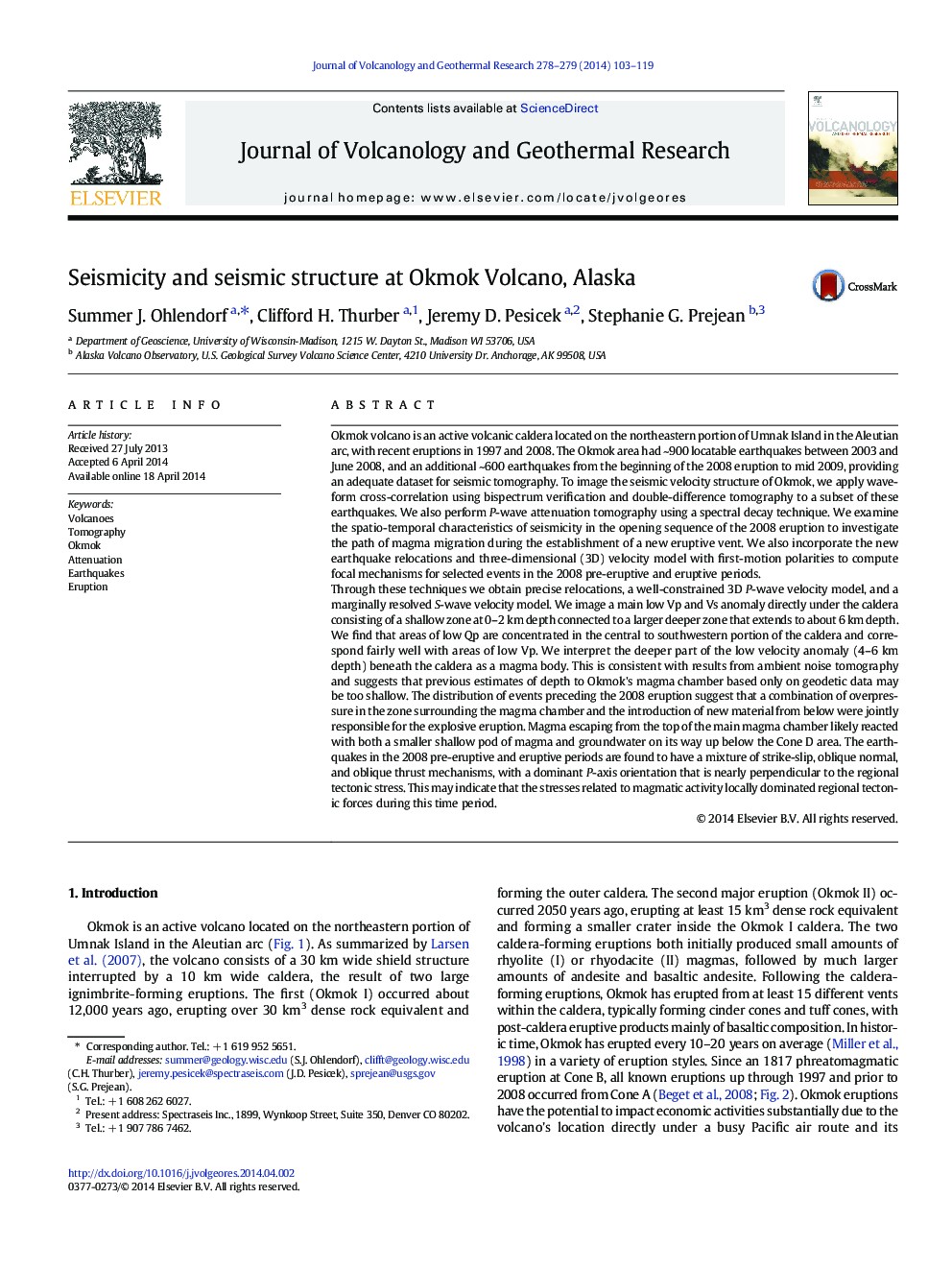| Article ID | Journal | Published Year | Pages | File Type |
|---|---|---|---|---|
| 6439945 | Journal of Volcanology and Geothermal Research | 2014 | 17 Pages |
Abstract
Through these techniques we obtain precise relocations, a well-constrained 3D P-wave velocity model, and a marginally resolved S-wave velocity model. We image a main low Vp and Vs anomaly directly under the caldera consisting of a shallow zone at 0-2Â km depth connected to a larger deeper zone that extends to about 6Â km depth. We find that areas of low Qp are concentrated in the central to southwestern portion of the caldera and correspond fairly well with areas of low Vp. We interpret the deeper part of the low velocity anomaly (4-6Â km depth) beneath the caldera as a magma body. This is consistent with results from ambient noise tomography and suggests that previous estimates of depth to Okmok's magma chamber based only on geodetic data may be too shallow. The distribution of events preceding the 2008 eruption suggest that a combination of overpressure in the zone surrounding the magma chamber and the introduction of new material from below were jointly responsible for the explosive eruption. Magma escaping from the top of the main magma chamber likely reacted with both a smaller shallow pod of magma and groundwater on its way up below the Cone D area. The earthquakes in the 2008 pre-eruptive and eruptive periods are found to have a mixture of strike-slip, oblique normal, and oblique thrust mechanisms, with a dominant P-axis orientation that is nearly perpendicular to the regional tectonic stress. This may indicate that the stresses related to magmatic activity locally dominated regional tectonic forces during this time period.
Related Topics
Physical Sciences and Engineering
Earth and Planetary Sciences
Geochemistry and Petrology
Authors
Summer J. Ohlendorf, Clifford H. Thurber, Jeremy D. Pesicek, Stephanie G. Prejean,
